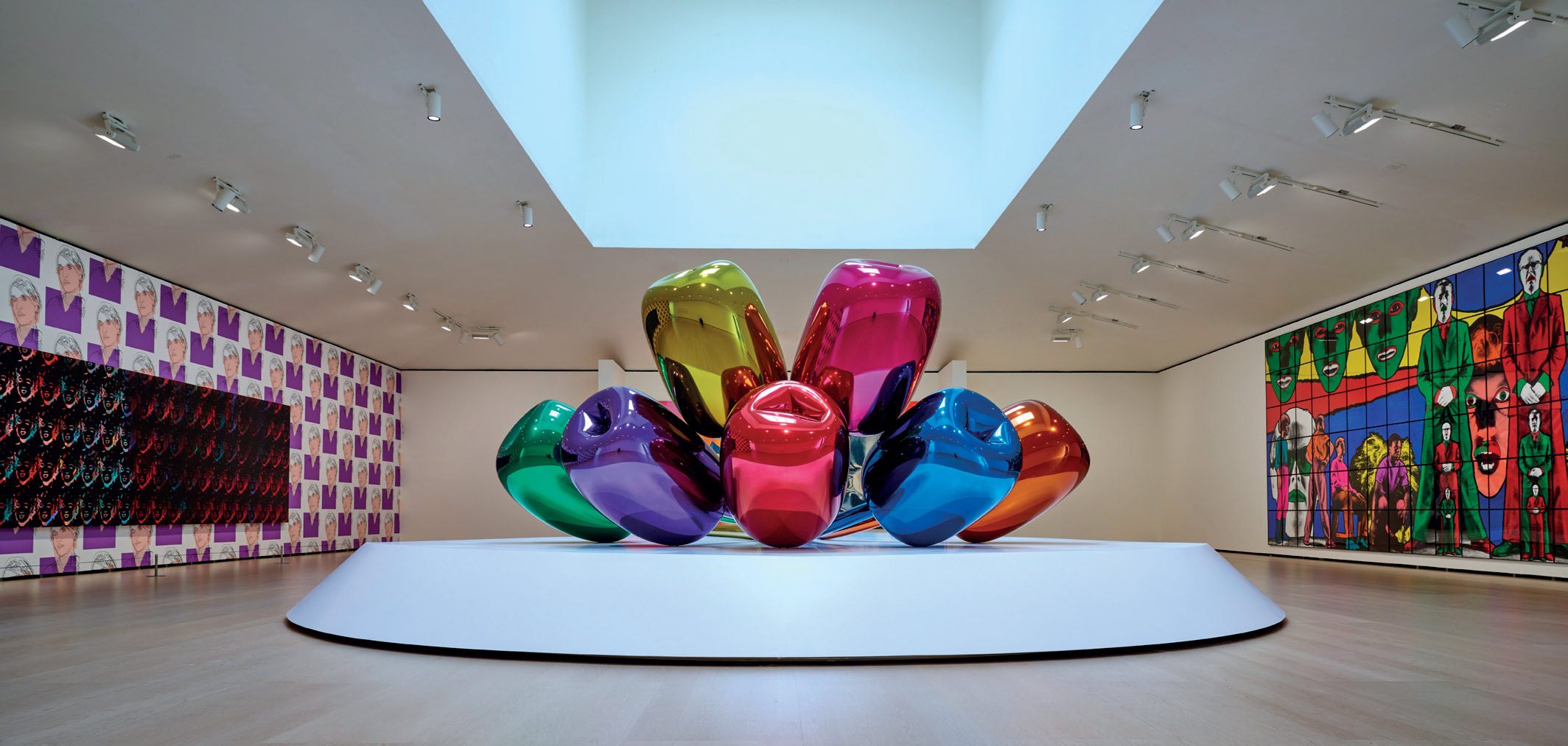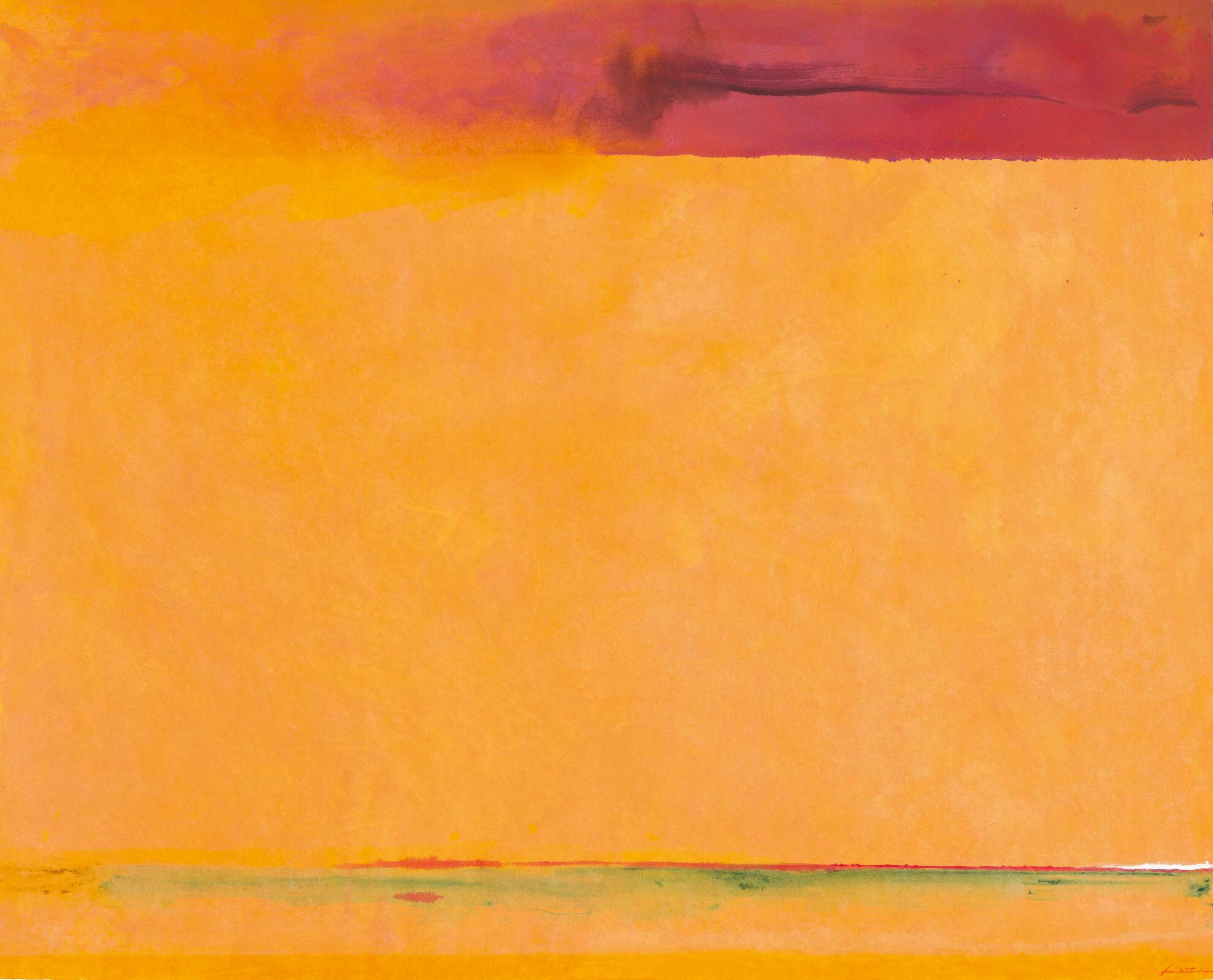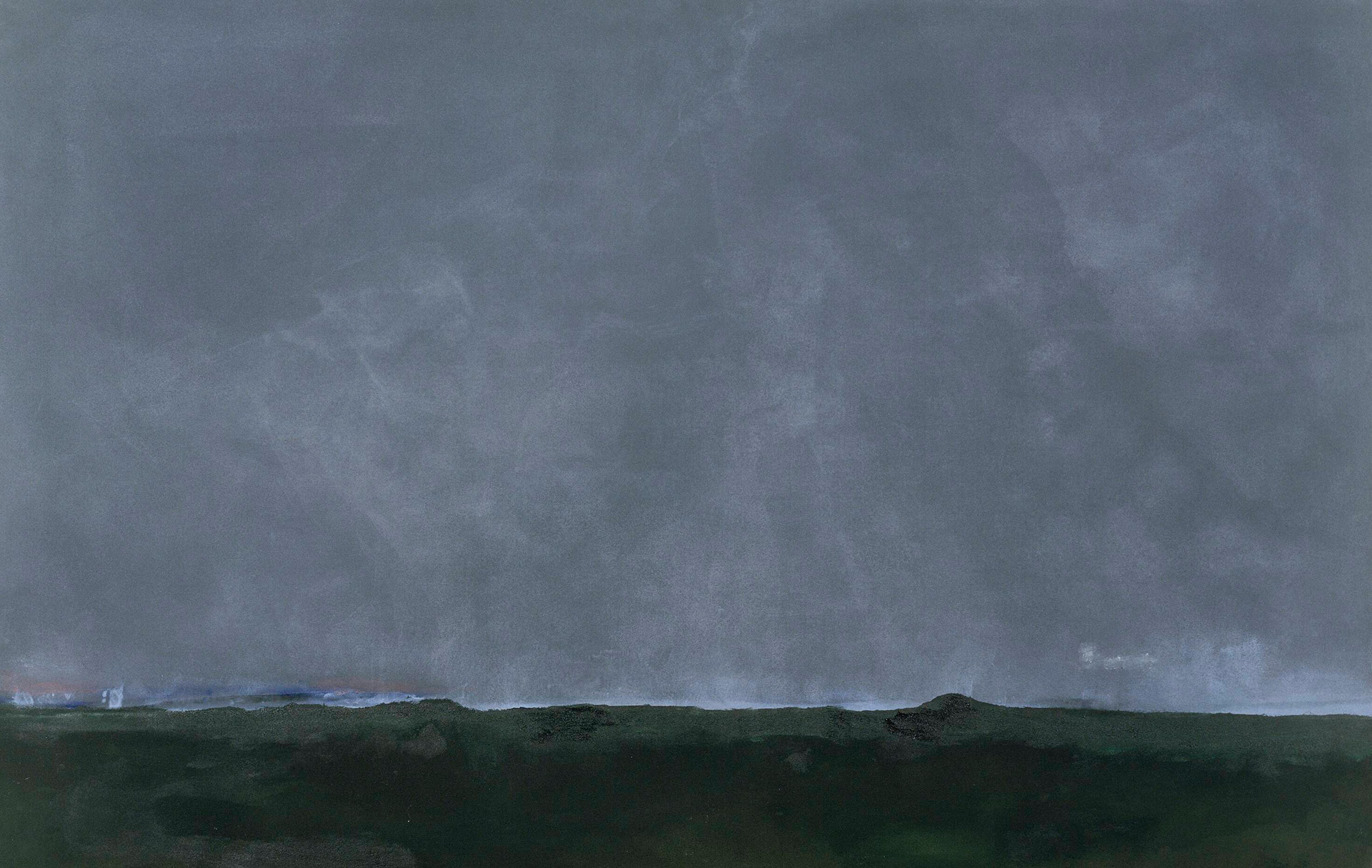Painting to Finish: 2000s
Helen Frankenthaler had always shifted seamlessly between painting on canvas and paper. Paper provided an alternative to canvas, one that was easier to manipulate and, if need be, discard. The ongoing dialogue between paper and canvas was also age contingent. When the choreography of composing on canvas at floor level became too physically demanding, the artist easily transitioned to large sheets of paper or canvas laid out on tabletops elevated on sawhorses.
Art and life commingle in mysterious ways. The paintings on paper that followed Frankenthaler’s marriage to Stephen DuBrul in 1994 seem to celebrate a new lease on life. Optimism, buoyed by calligraphic clarity and lighthearted whimsy, characterizes Solar Imp (1995) and Cassis (1995).
Frankenthaler never relinquished her dedication to beauty, even when other younger, more politically engaged artists dismissed it as obsolete or meaningless. Beauty defies simple definitions. Frankenthaler’s notion of beauty reflected the human condition. Late works, like Southern Exposure (2002), feel like veils of time fleeting. Looking at Driving East (2002), one might glimpse finality. Is it dawn or dusk?
There’s every reason to be philosophical about aging. “Over time, we’re left with the best,” was how Frankenthaler summed up her pursuit of an art unencumbered by rules.


